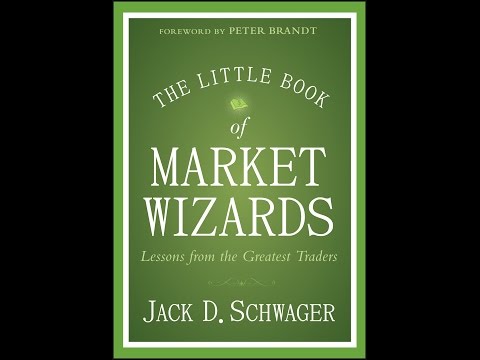Contents

When the flag pole is bullish, the bullish ABCD pattern is formed. When the flag pole is bearish, the bearish ABCD pattern is formed. Harmonic price patterns appear in a variety of shapes and sizes, but they all have some similar characteristics.


If the value does begin to climb again, the investor can simply buy-in later in the hopes that this time the stock will reach the goal and turn profitable. Using this method removes the threat of heavy losses and case permitting offers the opportunity to recuperate those smaller losses and make a profit. ABCD patterns are not present in every stock graph, but most investors will argue that if one digs deep enough, they can be found every day. The pattern is predictable and thus considered good to follow to make a profit.
abcd pattern stock photos, vectors, and illustrations are available royalty-free. See abcd pattern stock video clips
And since the stock closed fairly strong, traders could have swung this overnight. The stock gapped up the following morning to the $3,730 level. Day traders are always analyzing stock movement and scouring the internet for financial reports and news releases. Save yourself the trouble and sign up for the Trade of the Day e-letter below. This daily newsletter provides stock picks, trends and insights from some of Wall Street’s top experts.

The stock gapped up over 15% at the market open the following day. The more confirmation you have for your trade, the better. It looks just like a hammer with a mallet on top and a handle beneath. When you spot this pattern toward the end of a downtrend, or an uptrend, it can often signal that the trend is ending. When played correctly, you can take an entry after the candle closes and put your stop below the hammer handle. The pattern is often used to predict a trend continuation or a trend reversal depending on where your entry is taken.
In this case, the D point is the market entry-level, stop-loss is placed above the D level, and profit targets are placed at the C and A levels. More aggressive traders will buy into what they hope is the beginning of an uptrend near point D. More conservative traders will wait to see if the price moves above point C. Both types of traders commonly place an initial stop loss order a little below point D. The ABCD pattern indicates what the risk is and follows a clear pattern and should therefore be used as a guide on when to sell, either to make a profit or cut losses.
Take a position
Once the price starts moving up from point D, a buy position can be opened. Stop Loss is set just below point D, and the landmarks for profit-taking are points C, A, and above if there is a strong upward movement. No. 1 in Figure 4 shows the previous ABC pattern failure. Those who entered the counter-trend C short to the right would exit the trade at this point at No. 1. A new extreme forms and an A-long potential trade signal generated (No. 2) near confluence . This trade would be exited at No. 3 on the next B pivot.
To identify the ABCD pattern’s start and finish locations, ABCDs should have support and resistance. A support or resistance zone should be reached at the end of an impulse leg. Similarly, an ABCD trading pattern should begin and end at a point of support or resistance. The ABCD Pattern drawing tool allows analysts to highlight various four point chart patterns. Users can manually draw and maneuver the four separate points . The ABCD points create three separate legs which combine to form chart patterns.
- The BC bullish retracement should be between the low B and high C, which is below the high A.
- In fact, the best traders have all learned how to KISS—to keep it straightforward and simple—before they truly succeed in the trading game.
- This tool helps identify the support and resistance areas of the bullish and bearish turnsas well as measure the legs, thus helping to predict the outcome.
- ABCD pattern traders try to identify the second time when a trend loses steam and may reverse.
- Sometimes, a crazy hot sector is all it takes to push a stock through a successful ABCD pattern.
For the bearish formation you would like to see it at least get to C or lower while with the bullish formation you would want to see it get to C or higher. With this example, you have the CD forming a perfect bear flag pattern. You would take the stock or ETF short on the breakdown, as seen below, placing your stop above the most recent high inside the pullback.
Go to the Withdrawal page on the website or the Finances section of the FBS Personal Area and access Withdrawal. You can get the earned money via the same payment system that you used for depositing. In case you funded the account via various methods, withdraw your profit via the same methods in the ratio according to the deposited sums.
Depending on the trajectory of the swing, you’ll choose a point of entry after the stock breaks after the high. Remember to take suitable steps to manage your risk, like setting up a stop order to limit your loss. On a bearish ABCD, you might choose to enter a sell position at this point. Take profit is more subjective as it offers different options.
Example of trading the bullish ABCD pattern
Now that we https://topforexnews.org/ how to identify the ABCD stock and Forex pattern, we can start applying it to real price action. If you want to follow along, you may consider using the FXOpen TickTrader platform. There you’ll be able to use the built-in ABCD drawing tool that automatically calculates the Fibonacci ratios between points. The first version of the ABCD signals an impending market reversal trend change from uptrend to downtrend. When the market arrives at a point, where D may be situated, don’t rush into a trade. Use some techniques to make sure that the price reversed up (or down if it’s a bearish ABCD).

Each pattern leg is usually within a range of 3-13 bars/candles. If the range of bars is smaller, this indicates to the investor to look at a longer time period to find the pattern. It can form the basis of a working trading strategy if used correctly alongside other forms of technical analysis. A second disadvantage stems from the fact that stock price moves are rarely as neat and precise as those shown in our images of the ABCD pattern. Therefore, the price movement within the pattern may vary a bit, making it harder to identify.
https://en.forexbrokerslist.site/nore the stock if there’s a lot of resistance abcd stock pattern overhead or if it has one-and-dones. How much higher would your trading profits be if your losses were cut in half? How much higher would they be if you only lost half as frequently?
The second leg of the pattern represents a downside price correction in the existing uptrend that takes the price from point B down to point C, a swing low that is higher than point A. Make sure that you know how to apply Fibonacci tools correctly an follow all our tips. StocksToTrade in no way warrants the solvency, financial condition, or investment advisability ofany of the securities mentioned in communications or websites. In addition,StocksToTrade accepts no liability whatsoever for any direct or consequential loss arising from any useof this information.
How to trade ABCD pattern
One of the best ways to read an https://forex-trend.net/ pattern, or any pattern in trading, is to pay close attention to the volume signature that accompanies the pattern. Typically, an abcd pattern in trading that is pointing upward is an indication of a bearish reversal. The initial intrada swing from A to B consolidates briefly in B to C.
It requires you to be selective when picking a stock, but it offers a clear risk level. So, for every ABCD setup, consider whether that’s a reasonable target. With that setup, I’m trading the ABCD pattern, but I also want the stock to hold VWAP all day. In very rare cases, you might buy the C leg before the breakout … like when a stock grinds up and closes strong on massive volume. It is relatively easy to see a trading pattern, but the challenge comes in trying to fully automate the process. Not only did ABCs and extremes have to be programed, but a trend confirmation signal had to be integrated.
Determine significant support and resistance levels with the help of pivot points. Note the spike in volume at the morning high of the day. Then a sharp pullback to the breakout level formed the B leg. It’s when a stock spikes big, pulls back, then grinds ups and breaks out to a new high of the day.